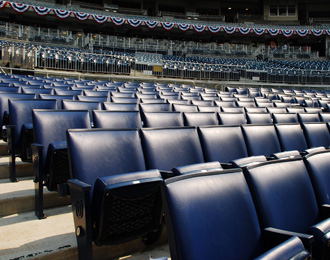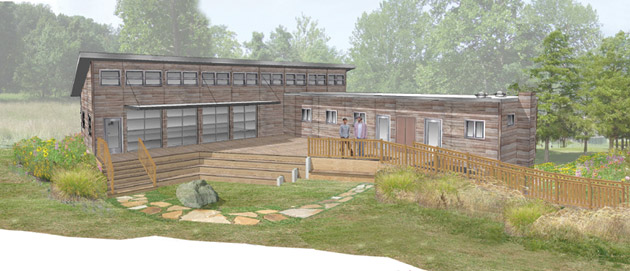 What does ‘green building’ mean? How can principles of sustainability be implemented in building design and construction and be certified as such? These were questions that the U.S. Green Building Council (www.usgbc.org) dealt with when they rolled out their first Leadership in Energy and Environmental Design (“LEED”) guidelines in the 1990s. Although LEED has received criticism for not incorporating measured building performance in its accreditation service, their guidelines have evolved over the years and are regarded as the leader in the world of green building certification [1]. Warm Home Cool Planet contributor John Bolduc reports that here in Cambridge–one of the nation’s most accomplished cities in sustainable practices–64 buildings have either been registered with LEED or accredited.
What does ‘green building’ mean? How can principles of sustainability be implemented in building design and construction and be certified as such? These were questions that the U.S. Green Building Council (www.usgbc.org) dealt with when they rolled out their first Leadership in Energy and Environmental Design (“LEED”) guidelines in the 1990s. Although LEED has received criticism for not incorporating measured building performance in its accreditation service, their guidelines have evolved over the years and are regarded as the leader in the world of green building certification [1]. Warm Home Cool Planet contributor John Bolduc reports that here in Cambridge–one of the nation’s most accomplished cities in sustainable practices–64 buildings have either been registered with LEED or accredited.
But for all the usefulness a green building certification system brings with it, it still doesn’t get at the need for sustainable developments on a slightly larger scale–that of a neighborhood or development project. After all, so much of our lives–and environmental impacts–are tied in with the nature of our neighborhoods. Things like transportation needs, population density, recreation space, air quality, and energy use are interrelated. This is what LEED’s newest volume of wisdom is all about. Known as LEED-ND (for “neighborhood development”), the set of guidelines and certification scheme has come out of a collaboration between the USGBC, National Resources Defense Council and the Congress for the New Urbanism. Sounds like a lovely idea, right? But in practice, not all locales have the luxury of cutting-edge environmental planning and certainly not all developers want to put the time and money into comprehensively green projects. That’s why I am so excited that NRDC just released “A Citizen’s Guide to LEED for Neighborhood Development.”
The Citizen’s Guide, which may be downloaded here, is just that–a very readable document intended to empower people to evaluate neighborhoods, whether they already exist or are only on paper. A wide swath of sustainability principles are embodied in LEED-ND, including “smart growth,” transportation, pedestrian-friendly streets and architecture, affordable housing, protection of natural resources, and climate change considerations. The guide includes a handy checklist so that anyone can get a rough idea of how well a neighborhood fares. Optionally, one can also try tabulating points to estimate what its LEED-ND score would be (in the formal certification assessment). Or, one can simply use the guide to ask better questions at a town meeting or push for more informed zoning policies–it’s all up to you!
[1] Keim, Brandon. “LEED the Way.” Stanford Social Innovation Review 8.2 (2010): 66-71.


